Decoding the Cyberpunk Universe: A Journey into Dystopian Futurism
In the sprawling cityscapes of the not-so-distant future, neon lights flicker against the perpetual rain, and towering skyscrapers cast ominous shadows over crowded streets. Advanced technology is both a savior and a menace, and the line between human and machine blurs with each passing day. Welcome to the world of cyberpunk, a gripping and dark genre that has sparked the imagination of countless creative minds and revelers.
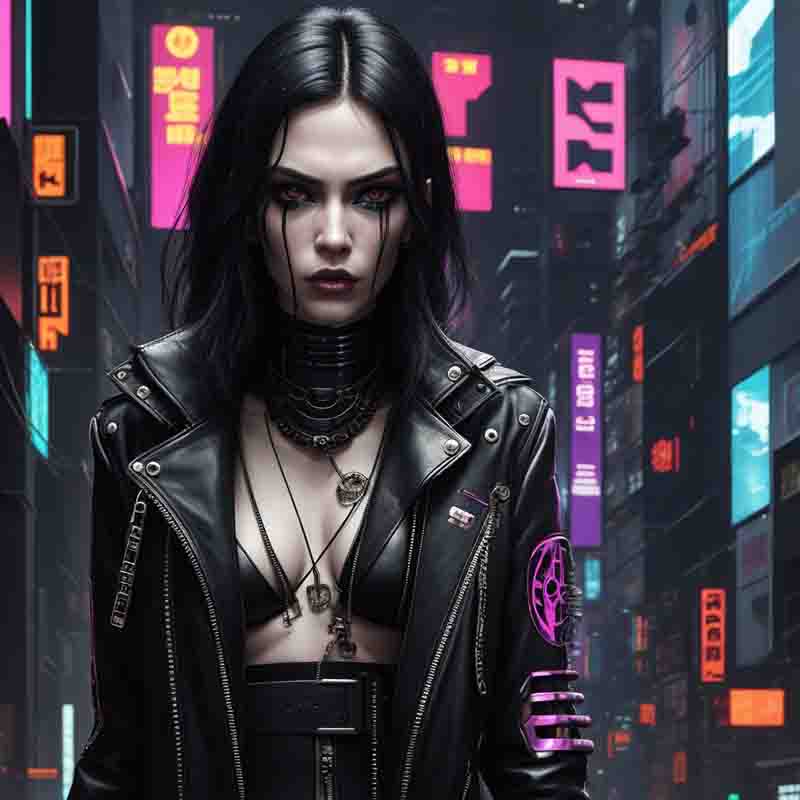
Cyberpunk is a genre characterized by a unique blend of elements, combining futuristic technology, dystopian settings, and often, a focus on the marginalized and disenfranchised.
Cyber Punk Blues
Likewolf's instrumental track draws from the electronic blues underground and serves as a soundscape for a nocturnal chase through the neon-coloured cityscape and as a backdrop for a lone cyborg contemplating its existence.
✅ Subscribe and become a channel member:
Cyberpunk: High-Tech and Low-Life
One of the defining features of Cyberpunk is its juxtaposition of high-tech and low-life.
In these futuristic worlds, technology has advanced by leaps and bounds, giving rise to cybernetic enhancements, artificial intelligence, and virtual reality.
Yet, amid this dazzling technological progress, society often teeters on the brink of collapse.
Mega-corporations wield immense power, governments are corrupt or ineffectual, and poverty and crime run rampant in the shadows.
A Fusion of Aesthetics Similarities
Cyberpunk, Gothic art, and Punk Rock may seem like disparate cultural phenomena, but they share several intriguing connections that have shaped their aesthetic and thematic elements.
Goth art, with its emphasis on darkness, decay, and the intricate juxtaposition of the human form with technology, has had a profound impact on cyberpunk's visual landscape.
The countercultural ethos of establishment and criticism of social norms is in line with cyberpunk, which envisions a dystopian future
Cyberpunk is profoundly linked to science fiction in terms of its themes, aesthetics and general vision and outlook.
Cyberpunk is a genre that challenges our preconceptions of progress, power, and identity. It offers a fascinating view into a future where the lines between man and machine are fuzzy, where technology is a double-edged sword, and where rebels and hackers fight against oppressive systems.
The Protagonists: Rebels and Antiheroes
In Cyberpunk stories, the protagonists are often rebels, hackers, or antiheroes who exist on the fringes of society.
These characters navigate a morally ambiguous landscape, where survival often requires bending or breaking the rules.
They challenge the status quo, whether by hacking into corporate databases, engaging in cyber warfare, or uncovering dark secrets hidden beneath the polished veneer of the dystopian world.
| Time Period | Key Events |
|---|---|
| 1968 | Do Androids Dream of Electric Sheep? - Philip K. Dick's novel sets the foundation with its exploration of artificial intelligence and the human-machine divide. |
| 1981 | Publication of Neuromancer - William Gibson's seminal novel introduces the term "cyberspace" and establishes the cyberpunk genre with its gritty depiction of a high-tech, dystopian future. |
| 1982 | Blade Runner Release - Ridley Scott's film adaptation of Philip K. Dick's novel, titled Blade Runner, becomes a visual landmark in cyberpunk cinema, influencing the genre's aesthetics for decades. |
| 1984 | Neuromancer Video Game - Interplay releases the video game adaptation of William Gibson's Neuromancer, contributing to the genre's expansion into interactive media. |
| 1988 | Akira Manga and Anime Release - Katsuhiro Otomo's Akira introduces cyberpunk to a global audience through its manga and anime, showcasing a futuristic Tokyo grappling with psychic powers and government conspiracies. |
| 1993 | Shadowrun Tabletop Role-Playing Game - Catalyst Game Labs releases the Shadowrun RPG, blending cyberpunk with fantasy elements such as magic and mythical creatures. |
| 1995 | Ghost in the Shell - Mamoru Oshii's anime film explores themes of identity and consciousness in a cyberpunk world heavily influenced by Gibson's Neuromancer. |
| 1997 | The Matrix Film Release - The Wachowskis' The Matrix revolutionizes cyberpunk cinema with its groundbreaking visual effects, philosophical themes, and exploration of simulated reality. |
| 1999 | Deus Ex Video Game - Ion Storm releases Deus Ex, a critically acclaimed video game that blends first-person shooter gameplay with intricate cyberpunk storytelling, addressing themes of government conspiracies and human augmentation. |
| 2003 | Snow Crash - Neal Stephenson - Neal Stephenson's novel Snow Crash gains popularity for its satirical take on cyberpunk, exploring the convergence of virtual and physical realities. |
| 2007 | Release of BioShock Video Game - BioShock, developed by Irrational Games, combines elements of cyberpunk with dystopian storytelling, exploring the consequences of unchecked scientific experimentation. |
| 2010 | Cyberpunk 2077 Announcement - CD Projekt announces Cyberpunk 2077, an ambitious video game adaptation set in a sprawling open-world city, generating significant anticipation in the gaming community. |
| 2018 | Altered Carbon TV Series - Netflix releases the TV adaptation of Richard K. Morgan's novel Altered Carbon, bringing cyberpunk themes to the small screen with its exploration of consciousness transfer and societal inequality. |
| 2020 | Cyberpunk 2077 Release - CD Projekt Red launches Cyberpunk 2077, garnering attention for its immersive world, complex narrative, and technical issues. The release further cements cyberpunk's influence in the gaming industry. |
| 2021 | Post-Cyberpunk Works - A wave of post-cyberpunk narratives emerges, offering nuanced perspectives on the genre. Works like The Peripheral by William Gibson and The Expanse TV series continue to evolve cyberpunk themes. |
| Present | Ongoing Influences - Cyberpunk continues to influence diverse media, with ongoing adaptations, reimaginings, and new releases keeping the genre vibrant and relevant. |
This timeline captures key milestones in the evolution of cyberpunk across literature, film, games, and other forms of media. Keep in mind that the genre is dynamic, and new contributions are continually shaping its narrative landscape.
Cyberpunk's Dystopian Future
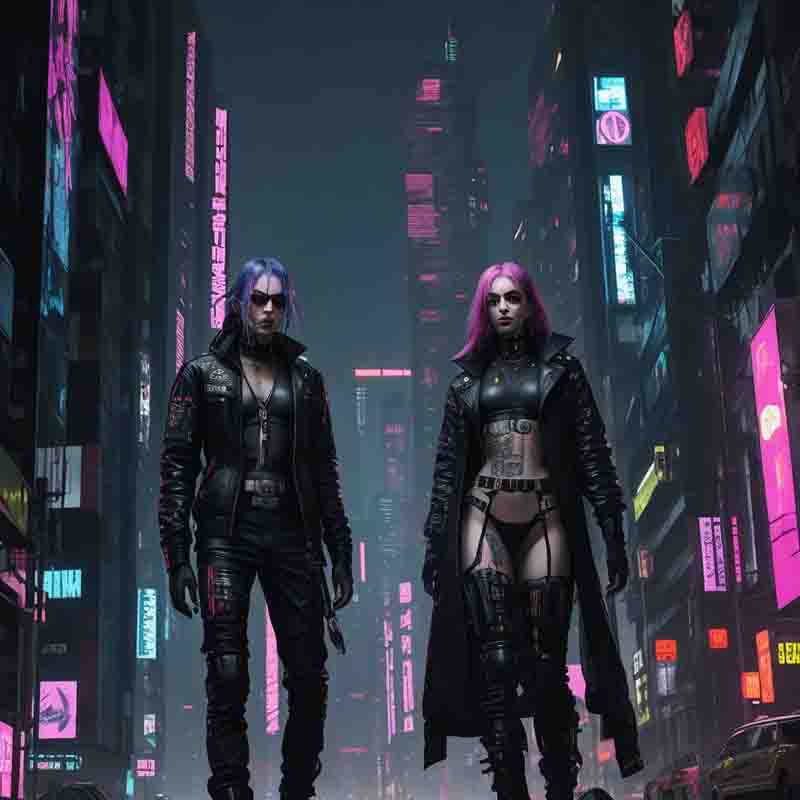
In the dimly lit alleys of a sprawling, neon-soaked metropolis, where technology merges with the human spirit, and where the line between reality and the virtual blurs, you find yourself in the world of Cyber Punk.
Dystopian futures are a hallmark of the Cyberpunk genre. These futures are marked by decay, environmental degradation, and social inequality.
The cityscapes are often sprawling and chaotic, with towering skyscrapers housing the elites and sprawling slums for the disenfranchised.
Pollution and neon lights are ubiquitous, casting an eerie glow over the urban landscape.
Cybernetics and Augmentation
In the world of Cyberpunk, the human body is not sacrosanct. Cybernetic enhancements, such as neural implants, robotic limbs, and ocular upgrades, are common.
These augmentations blur the line between human and machine, offering unique abilities but raising profound questions about identity and humanity.
Hacking is a central theme in many Cyberpunk narratives. Hackers are often portrayed as digital rebels who use their expertise to expose corruption, uncover secrets, or bring down oppressive regimes.
They navigate the virtual realm with finesse, exploiting vulnerabilities in powerful systems to achieve their goals.
Cyberpunk's Ethical Dilemmas
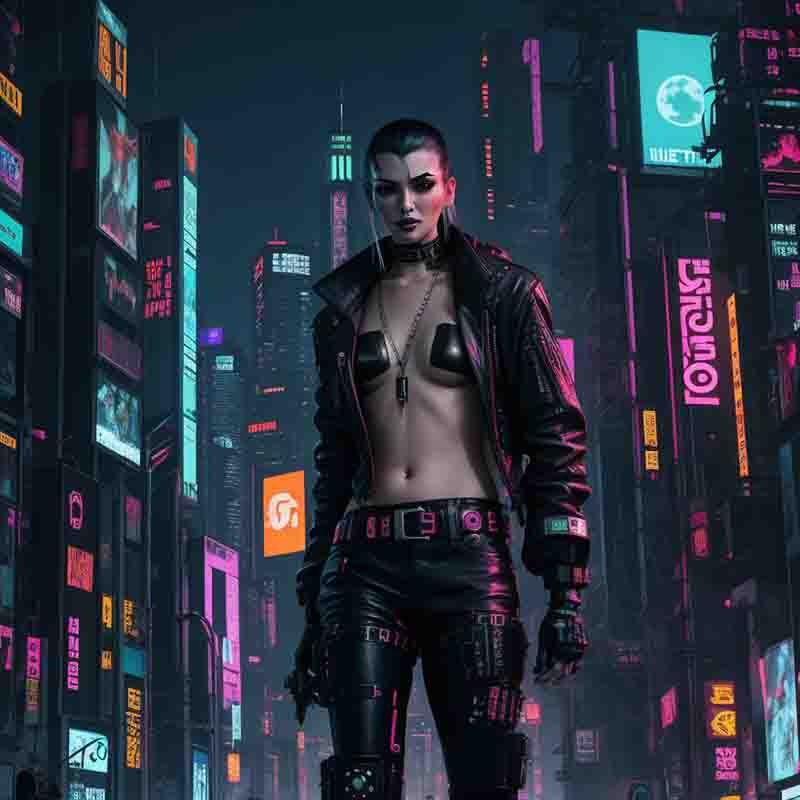
Characters in Cyber Punk often grapple with moral ambiguity, making difficult choices in a world where right and wrong are not always clear-cut.
Cyberpunk stories frequently explore ethical dilemmas arising from advanced technology.
Questions about surveillance, privacy, the consequences of unchecked corporate power, and the potential for AI to surpass human intelligence are common themes.
These narratives force readers and viewers to confront the moral challenges posed by a hyperconnected world.
Notable Cyberpunk Literature and Authors
| Author | Notable Works | Impact on Cyberpunk | |
|---|---|---|---|
| William Gibson | "Neuromancer," "Count Zero,", "Mona Lisa Overdrive" | Considered the father of Cyberpunk, Gibson's "Neuromancer" set the standard for the genre, introducing the term "cyberspace". | |
| Philip K. Dick | "Do Androids Dream of Electric Sheep?" (basis for "Blade Runner") | His exploration of identity, artificial intelligence, and human vs. machine blurred the line between reality and illusion. | |
| Neal Stephenson | "Snow Crash," "Cryptonomicon," "The Diamond Age" | Stephenson's "Snow Crash" popularized the concept of a virtual metaverse and remains a cornerstone of Cyberpunk literature. | |
| Bruce Sterling | "Mirrorshades" (Editor), "Schismatrix," "Holy Fire" | As an editor of the "Mirrorshades" anthology, Sterling helped define Cyberpunk's aesthetic and themes, emphasizing the intersection of high-tech and low-life. | |
| Rudy Rucker | "Software," "Wetware," "Freeware" | Rucker's works incorporated elements of surrealism and absurdity, expanding the genre's imaginative possibilities. | |
| Pat Cadigan | "Synners," "Mindplayers," "Fools" | Cadigan explored the psychological and emotional impact of technology on individuals, delving into the human side of Cyberpunk. | |
| John Shirley | "Eclipse," "City Come A-Walkin'," "The Eclipse Trilogy" | Shirley's gritty and nihilistic approach to Cyberpunk captured the genre's dark and dystopian essence, influencing subsequent works. |
These authors and their works have left an indelible mark on the Cyberpunk genre, shaping its themes, aesthetics, and the way we imagine dystopian futures intertwined with advanced technology and societal upheaval.
Their contributions continue to inspire new generations of writers and creators in the ever-evolving world of Cyberpunk literature.
Pioneers of Cyberpunk and Their Enduring Influence

To truly understand Cyber Punk, one must first journey back to its origins. It was the early 1980s when the term was first coined by author Bruce Bethke in his short story titled "Cyber Punk."
"Neuromancer" and "Blade Runner" were instrumental in shaping the visual and thematic elements that define the Cyberpunk aesthetic.
The neon-lit cityscapes, high-tech but grimy environments, and the fusion of technology with the human body have become iconic tropes in the genre.
Their influence is evident in the design of countless Cyberpunk works, from literature to films, video games, and fashion.
The gritty, dystopian futures they envisioned continue to inspire artists and creators.
Both works delve into the concept of the human-machine interface, where characters are augmented with technology or struggle with questions of identity and reality.
"Neuromancer" explores the melding of humans with the digital world, while "Blade Runner" questions what it means to be human in a world of androids.
The themes of transhumanism, cyberspace, and the ethical implications of technology remain central in Cyberpunk.
They have spurred discussions about the future of human enhancement, artificial intelligence, and the consequences of a digital age.
"Neuromancer" and "Blade Runner" are not just classic works of Cyberpunk; they are pillars of the genre that have left an indelible mark on popular culture.
Their enduring influence is a testament to their visionary storytelling, innovative world-building, and their ability to tap into timeless themes that continue to resonate with audiences in the ever-evolving landscape of technology and society.
Cyberpunk in Mainstream Culture: The Fusion of Themes and Aesthetics
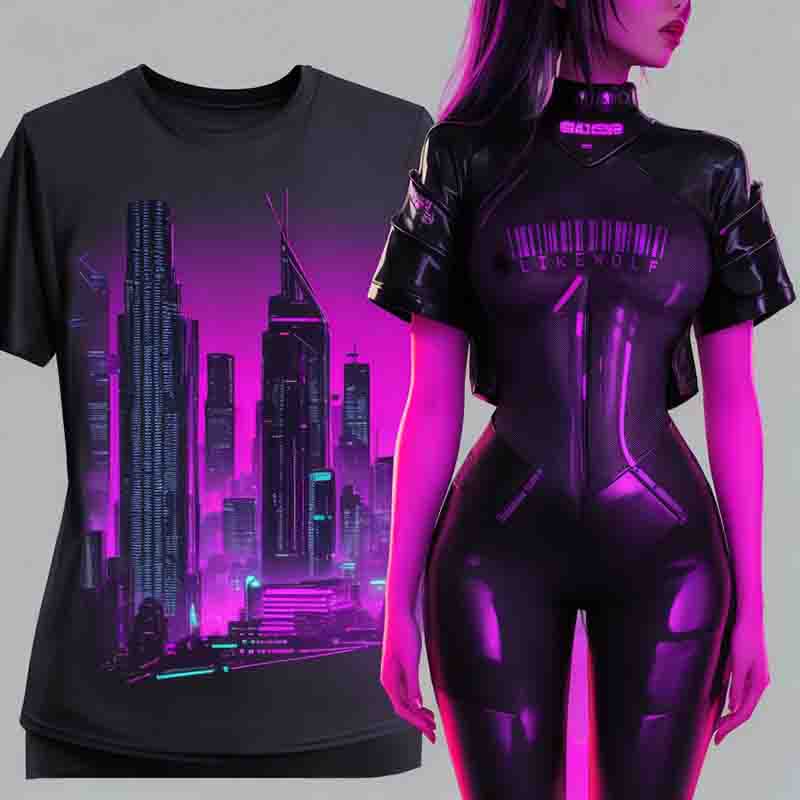
Cyber Punk's aesthetic influence can be seen on fashion runways and in streetwear, reflecting a fascination with its gritty, urban visuals.
Cyberpunk themes and aesthetics have transcended their niche origins to become a significant part of mainstream culture.
From fashion to music, film to literature, and even technology, the influence of Cyberpunk can be seen in various facets of contemporary society.
Elements of Cyberpunk fashion have been embraced by designers and retailers, appearing in runway collections and everyday clothing lines.
Brands often incorporate futuristic, tech-inspired designs into their products.
The electronic, synthesized soundscapes commonly associated with Cyberpunk have influenced various music genres, particularly electronic music.
Synthwave and cyberpunk-inspired music genres have gained popularity and are now in the mainstream of the music industry.
The themes of rebellion and anti-authoritarianism inherent in Cyberpunk narratives resonate with countercultural movements, such as cybergoth and steampunk subcultures.
Cyber Punk films and TV series, such as "The Matrix" trilogy and "Altered Carbon," have achieved blockbuster status, drawing vast mainstream audiences.
Anthology series like "Black Mirror" have explored Cyber Punk themes, inviting viewers to contemplate the implications of technology on society.
Punk themes have transcended literature, blending with other genres such as science fiction, dystopian fiction, and fantasy.
Cyber Punk elements have appeared in popular comic book series, influencing characters, aesthetics, and storylines.
Cyber Punk Video Games: Digital worlds in motion
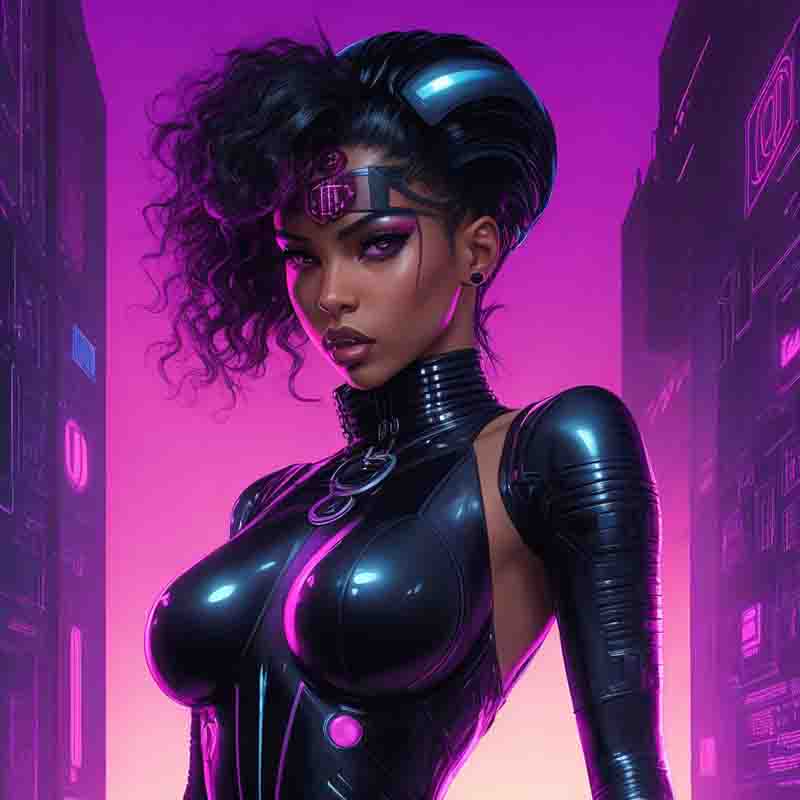
As Cyberpunk has matured, a new wave of narratives has emerged, collectively known as post-cyberpunk. These stories offer nuanced perspectives on the genre, challenging traditional tropes and exploring more optimistic visions of the future.
Cyber Punk has found a natural home in the world of video games, where players can fully immerse themselves in the genre's dystopian landscapes, high-tech gadgets, and cybernetic adventures.
In this section, we'll explore the captivating world of Cyber Punk video games:
-
"Deus Ex" Series (2000 - 2016): The "Deus Ex" series is a quintessential example of Cyber Punk in gaming. These titles blend first-person shooter gameplay with role-playing elements, offering players choices that impact the narrative. The games delve into themes of transhumanism, government conspiracies, and the consequences of human augmentation. Players navigate intricate, cybernetic worlds, making choices that shape the outcome.
-
"System Shock 2" (1999): "System Shock 2" is a pioneering title in immersive storytelling. It combines survival horror, first-person shooter mechanics, and RPG elements to create a haunting and atmospheric experience. The game explores themes of AI, cybernetics, and isolation aboard a derelict spaceship. Its eerie, cybernetic atmosphere and sentient AI antagonist remain iconic in the genre.
-
"Cyberpunk 2077" (2020): "Cyberpunk 2077" is a highly anticipated open-world RPG set in the dystopian Night City. It places players in the shoes of V, a cybernetically enhanced mercenary, and offers a sprawling urban playground to explore. The game delves into themes of body modification, corporate power, and a society on the brink of collapse. Its expansive open world captures the essence of Cyber Punk's neon-lit cityscapes and gritty streets.
-
"Observer" (2017): "Observer" is a psychological horror game that takes place in a cyberpunk future. Players step into the shoes of Daniel Lazarski, a neural detective who can hack into the minds of suspects. The game explores themes of identity, surveillance, and the human psyche. Its dark and hallucinogenic atmosphere creates a sense of unease.
-
"Remember Me" (2013): "Remember Me" combines action-adventure gameplay with a rich Cyber Punk narrative. Players control Nilin, a memory hunter in a future where memories can be manipulated. The game delves into themes of memory, identity, and the ethical implications of technology. Its Parisian cyberpunk setting offers a unique twist on the genre.
Rebellion in a Digital Age: Cyberpunk's Ongoing Influence
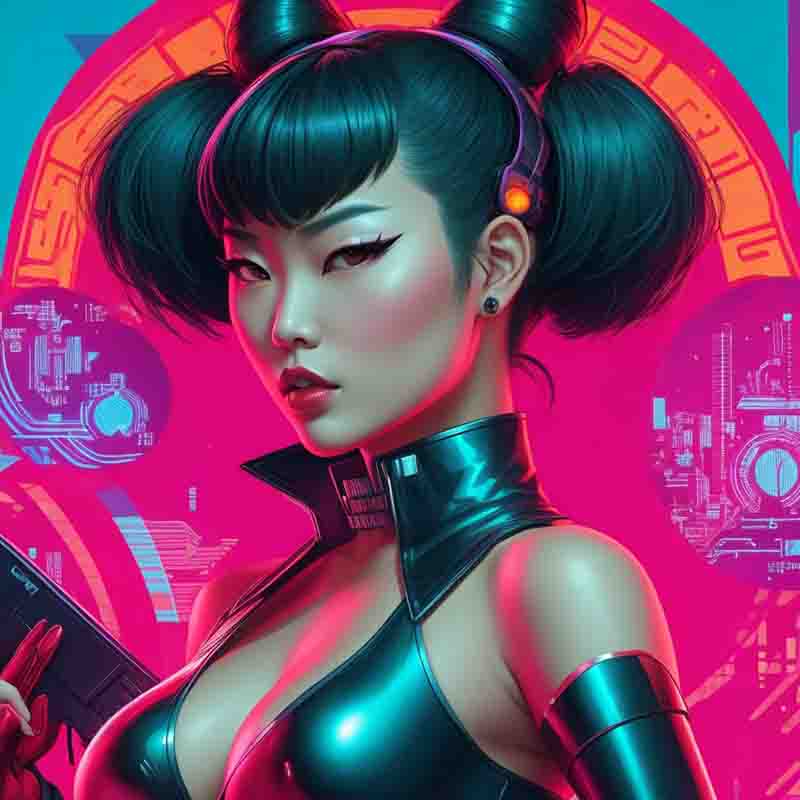
In cyberpunk, characters may have augmented limbs, neural implants, or other enhancements, exploring the consequences of merging humans with machines.
What sets Cyber Punk video games apart is their ability to make players active participants in the genre's narratives.
Players can make choices that influence the story, interact with futuristic technology, and navigate complex moral dilemmas.
The immersive nature of gaming allows for a deeper exploration of Cyber Punk themes and aesthetics.
As technology advances, so too do Cyber Punk video games.
The genre has evolved from pixelated classics like "System Shock" to visually stunning, open-world experiences like "Cyberpunk 2077."
These games continue to push the boundaries of storytelling and immersion, captivating players with their dystopian visions of the future.
Cyber Punk-Inspired Artwork: The Intersection of Technology and Creativity
The striking visual aesthetics and thought-provoking themes of cyber punk have influenced not only literature, film, and video games, but also the world of visual art.
Artists have harnessed the genre's themes and aesthetics to create thought-provoking and visually stunning works of art that challenge our perceptions of the future.
-
Digital Art and Concept Design: The advent of digital art has given rise to a flourishing Cyber Punk art scene. Artists use digital tools to craft intricate, futuristic landscapes, character designs, and cybernetic enhancements. Concept artists play a vital role in shaping the visual identity of Cyber Punk universes, from the towering skyscrapers of Night City to the intricate cyberware of characters.
-
Neon and Glitch Aesthetics: Neon lights and vibrant colors are a hallmark of Cyber Punk visuals. Artists experiment with neon palettes to create dazzling cityscapes and characters bathed in electric hues. Some artists incorporate glitch aesthetics, manipulating digital images to create intentional errors and distortions. This reflects the genre's fascination with digital imperfections and the fragility of technology.
-
Cybernetic Portraiture: Portraits often feature characters with cybernetic enhancements, blurring the line between humanity and machinery. These artworks explore themes of identity and transhumanism. Some artists employ augmented reality (AR) to enhance their creations. Viewers can use AR apps to interact with the art, adding an extra layer of immersion.
-
Street Art and Graffiti: Cyber Punk-inspired street art and graffiti often appear in real-world urban environments. They bring the genre's rebellious spirit to the streets, with stencils and murals featuring cybernetic imagery and dystopian motifs. Street artists use this medium to convey social and political commentary, echoing the genre's critique of corporate control and surveillance.
-
Sculpture and Installation Art: Some artists take Cyber Punk into the physical realm, creating sculptures and installation pieces that embody the genre's fusion of technology and humanity. Installation art may incorporate interactive elements, allowing viewers to immerse themselves in Cyber Punk environments.
Cyber Punk-inspired artwork not only serves as visual storytelling but also influences mainstream culture.
It has inspired fashion designers, filmmakers, and musicians, permeating various creative disciplines.
The fusion of technology and art in Cyber Punk showcases the potential for creative expression in an increasingly digital world.
The internet has become a thriving platform for Cyber Punk artists to share their work and collaborate with like-minded individuals.
Online communities, social media, and art-sharing platforms have facilitated the global dissemination of Cyber Punk-inspired art.
Common Character Types in Cyber Punk: Archetypes of the Digital Frontier
-
The Digital Maverick: Hackers are the quintessential Cyber Punk characters, navigating the digital landscape with unparalleled skill. They challenge corporate control, expose secrets, and manipulate technology for their own ends.
-
The Detective: Detectives in Cyber Punk worlds are often noir-inspired figures, investigating corporate conspiracies, unsolved mysteries, and cybercrimes. They have a penchant for digging deep and unveiling hidden truths.
-
The Antihero: Antiheroes are morally gray protagonists who operate outside the boundaries of conventional ethics. They may have noble intentions but are willing to employ ruthless means to achieve their goals. Antiheroes are often survivors in the harsh, unforgiving landscapes of Cyber Punk.
-
The Corporate Executive: Corporate executives wield immense power in the world of Cyber Punk, manipulating governments, technology, and even the lives of citizens for profit. These characters are driven by ambition and a hunger for control. They are often portrayed as morally bankrupt, willing to sacrifice humanity for their corporate agendas.
-
The Human-Machine Hybrid: Cyborgs and augmented humans straddle the line between flesh and machine. They may have cybernetic enhancements that grant them extraordinary abilities. These characters often grapple with questions of identity, belonging, and the consequences of technological modification.
-
Champions of Resistance: Rebel leaders are at the forefront of resistance movements, rallying against oppressive corporate regimes. They inspire others to join the fight for freedom. These characters possess charisma, strategic acumen, and an unwavering commitment to their cause. They are willing to make sacrifices for the greater good.
Social Inequality and Urban Disparity
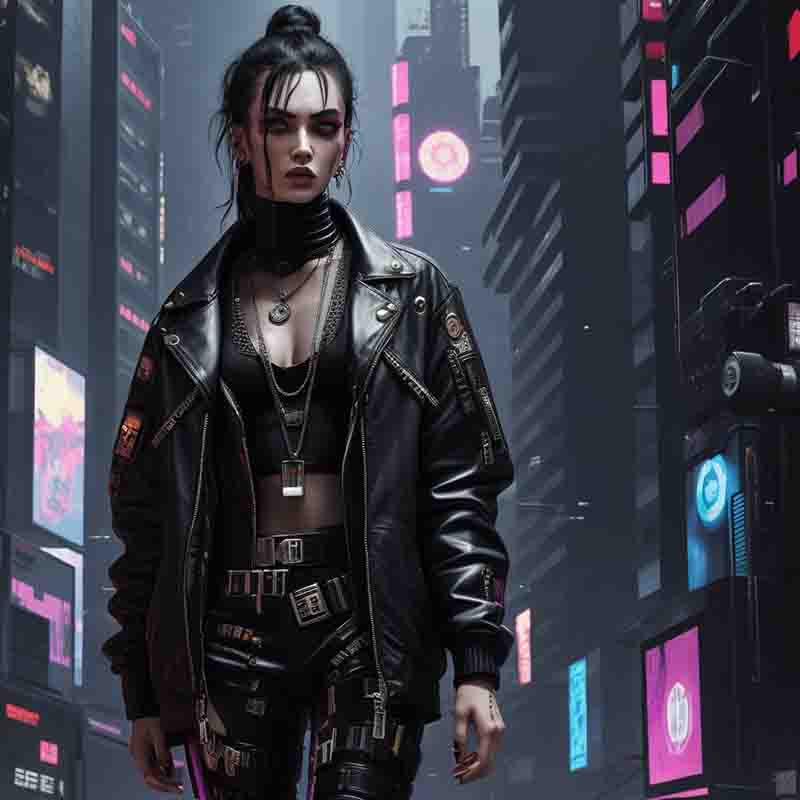
Cyber Punk Urban fashionista posing in leather jacket on city street. The urban landscape serves as a backdrop
They reflect the multifaceted nature of humanity in a digital age, where individuals must navigate a world fraught with moral dilemmas, technological wonders, and corporate tyranny.
These characters challenge societal norms and confront the consequences of a hyper-connected, high-tech world.
Cyber Punk character archetypes have endured over the years, evolving with the genre to reflect contemporary concerns about technology, privacy, and the human experience.
Cyber Punk: Embracing the Digital Frontier
Born from the imagination of visionary writers and creators, cyber punk has become a cultural landmark that illuminates the complexities of our digital age.
At the heart of Cyber Punk lies a dynamic interplay between themes and aesthetics.
The genre's narratives grapple with the consequences of rapid technological advancement, corporate power, and the erosion of personal privacy.
His visual and auditory aesthetics transport us into neon-lit cityscapes, eerie soundscapes, and the dichotomy of the theoretical and the virtual.
From the catwalks of the fashion world to blockbuster movies, from the synthesizers of the retro wave to the virtual worlds of games, cyberpunk has left a lasting imprint.
Cyber Punk is a reflection of our contemporary fears and critiques of the digital world.
It asks us to confront the ethical dilemmas created by technology, the erosion of privacy, and the consequences of unchecked corporate power.
Yet, within the bleakness of its dystopian settings, it offers messages of resilience and the potential for change.
Cyber Punk: FAQ
Are you curious about music, art, technology, fashion, humanity, lifestyle, and beer?
If so, then you need to subscribe to the free Likewolf newsletter.
100% privacy. When you sign up, we'll keep you posted.
Mysterious Phenomenon
Reflection Of Our True Nature
